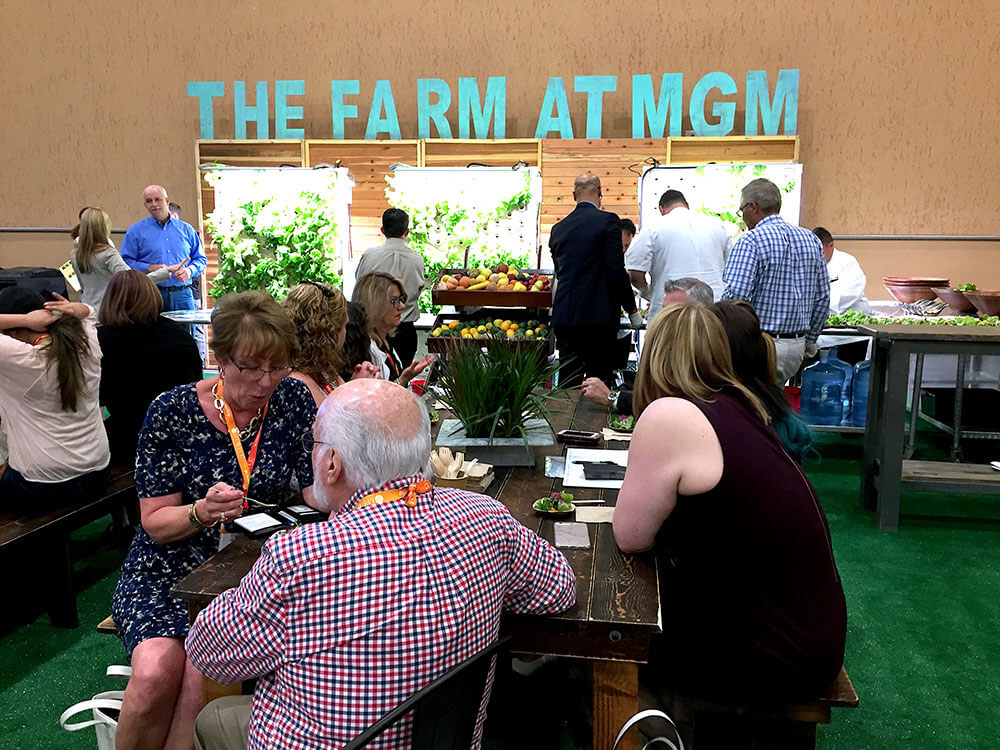
Will vertical farms crop up at your next conference?
Imagine a lush garden — springy and green, overflowing with arugula, cilantro, cherry tomatoes, and more. Now imagine that it’s vertical, indoors — and growing on site at your next conference.
Experiential F&B
Vertical farming made it happen at MPI’S World Education Congress 2017, as MGM Grand Chef Norris Kelly served conference attendees fresh salads made with ingredients taken directly from a vertical garden along a wall. It was the first time that vertical farming had been executed at an MGM property, said Yalmaz Siddiqui, vice president, corporate sustainability, at MGM Resorts International.
The vertical “farm” was made from large panels of low-density polyethene, to which soil plugs had been added. Multiple plants can be grown from one plug, which were spongy and soft, with the look and feel of a buoyant fudge brownie. The greens take approximately 28 days to grow, Siddiqu said.
As attendees nibbled on their freshly harvested salads — made with ingredients including edible flowers and lemon herb vinaigrette — David Martin, CEO of Indoor Farms of America, and producer for the vertical farm at MGM Grand, talked about the benefits of indoor agriculture, particularly vertical farming.
Not only does indoor agriculture provide enhanced air quality and noise reduction, it also serves as a form of natural art, Martin said.
What’s more, it’s sustainable, he said. “Indoor Farms of America was grown out of a desire to bring fresh food to [a variety of different] places in the world.”
Sustainable Growth
Growing food near where it will be eaten has a positive environmental impact. According to Martin, a conventionally grown head of lettuce might travel 25,000 miles over three weeks of time. With vertical farming, the timespan can be abbreviated, and there’s a much smaller carbon footprint as a result, he said.
“Our focus is delivering produce where it has grown,” Martin said. “It can literally be minutes away from harvest to on your plate.”
Indoor farms also use 95 percent less water than traditional dirt farms — which is especially critical in areas prone to drought, he said. “We have a farm of a thousand panels in a village in Botswana,” where there is a serious water shortage. “They can’t do dirt farming because of the water shortage.”
Vertical farming isn’t just sustainable, it’s personally satisfying, Martin added. “There’s no greater experience than harvesting a salad that we took just from the wall.”

MPI WEC attendees enjoyed salads picked directly from the wall at MGM Grand Las Vegas.
